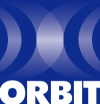Changes between Version 1 and Version 2 of Other/Summer/2025/QuantumComputing
- Timestamp:
- Jun 16, 2025, 5:25:51 PM (6 months ago)
Legend:
- Unmodified
- Added
- Removed
- Modified
-
Other/Summer/2025/QuantumComputing
v1 v2 5 5 **Advisors:** Minsung Kim, Byungjun Kim 6 6 7 == Project Setup8 9 ...10 11 7 == Project Objective 12 8 13 ... 9 The project will explore non-traditional computing methods for “Non-Orthogonal Medium Access-based Multiple-Input Multiple-Output” (NOMA-MIMO) wireless systems. Both MIMO and NOMA are considered among the most promising techniques to increase wireless capacity by scaling up the number of serviced devices at a time. However, to do so, they require much more computationally demanding processing at the receiver. A proposed solution is to reduce MIMO Maximum Likelihood Detection (MLD) to Quadratic Unconstrained Binary Optimization(QUBO), which resembles a Hamiltonian. We, then, convert QUBO into the Ising form under the Ising model, and use an Ising solver for the best Ising configurations. Finally, the best candidate will be mapped to MIMO Detected Bits. 14 10 15 Over the summer, our team split into three groups to ...11 Over the summer, our team split into three groups to handle ... 16 12 17 13 == Weekly Progress … … 19 15 ==== WEEK ONE ==== 20 16 [https://docs.google.com/presentation/d/1ppRkHwm46IA_4cXkUhFewYV8vDsE0xGb/edit?usp=sharing&ouid=115637716922072162001&rtpof=true&sd=true Week 1 NOMA-MIMO Presentation]\\ 21 [ Week 1 LDPC Presentation]\\22 [ Week 1 RF Digital Fingering Presentation]\\17 [https://replace_with_real_link_here Week 1 LDPC Presentation]\\ 18 [https://replace_with_real_link_here Week 1 RF Digital Fingering Presentation]\\ 23 19 20 **Progress**: 21 - Familiarize ourselves with OrbitLab, ParaMax: quantum-inspired algorithm using simulated annealing and parallel tempering for MIMO ML detection, and other state-of-the-art quantum approaches for NOMA-MIMO 24 22 25 23 … … 28 26 [https://link.to/week1_presentation Week 2 LDPC Presentation]\\ 29 27 [https://link.to/week1_presentation Week 2 RF Digital Fingering Presentation]\\ 28 29 **Progress**: 30 - Completed tutorials for GNURadio, USRP2, X310; Reviewed wireless packet detection and synchronization; Reviewed ParaMax architecture 30 31 31 32 … … 36 37 [https://link.to/week1_presentation Week 3 RF Digital Fingering Presentation]\\ 37 38 39 **Progress**: 40 - Obtained access to the Grid; Successful SISO transmission from nodes to MIMO rack 38 41 39 42 … … 43 46 [https://link.to/week1_presentation Week 4 RF Digital Fingering Presentation]\\ 44 47 48 **Progress**: 49 - 45 50 46 51 … … 50 55 [https://link.to/week1_presentation Week 5 RF Digital Fingering Presentation]\\ 51 56 52 57 **Progress**: 58 - 53 59 54 60 ==== WEEK SIX ==== … … 57 63 [https://link.to/week1_presentation Week 6 RF Digital Fingering Presentation]\\ 58 64 59 65 **Progress**: 66 - 60 67 61 68 ==== WEEK SEVEN ==== … … 64 71 [https://link.to/week1_presentation Week 7 RF Digital Fingering Presentation]\\ 65 72 66 73 **Progress**: 74 - 67 75 68 76 ==== WEEK EIGHT ==== … … 71 79 [https://link.to/week1_presentation Week 8 RF Digital Fingering Presentation]\\ 72 80 73 81 **Progress**: 82 - 74 83 75 84 ==== WEEK NINE ==== … … 78 87 [https://link.to/week1_presentation Week 9 RF Digital Fingering Presentation]\\ 79 88 80 89 **Progress**: 90 - 81 91 82 92 ==== WEEK TEN ==== … … 86 96 [https://link.to/week1_presentation RF Digital Fingering Final Presentation]\\ 87 97 98 **Summary**: 99 88 100 89 101 == Acknowledgements == 90 102 91 We would like to thank Minsung Kim and Byun jun Kim for their guidance throughout the summer. We also thank Jennifer Shane, Ivan Seskar, and the WINLAB faculty and staff for their support.103 We would like to thank Minsung Kim and Byungjun Kim for their guidance throughout the summer. We also thank Jennifer Shane, Ivan Seskar, and the WINLAB faculty and staff for their support. 92 104 93 105 == References ==
